Photos from the 2002
White Sands Fall Field Conference: Day 2
All photographs approved for public release by White Sands Missile Range; distribution unlimited. OPSEC review completed on November 14, 2002.
The above statement should be used by any person that uses the photographs in presentations, articles, etc. in reference to the photographs. The photographs were taken by Dr. David L. Anderson, Environmental Stewardship Division.
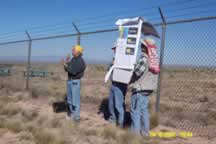
DCP 0802 – Virgil Lueth with help from Spencer
Lucas and Andy Heckert discussing the origin of the Hansonburg barite-fluorite-galena
deposits and
the tectonic history of the Sierra Oscura at the Trinity site fence on Day
2.
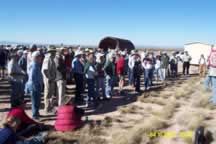
DCP 0803 – Field conference participants at the Trinity site parking
lot. “Jumbo” an explosives container that was not used during the
first atomic bomb blast in the background.
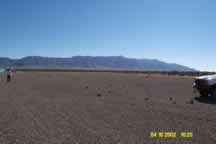
DCP 0804 – View east to the Sierra Oscura escarpment
from the Trinity site parking lot.
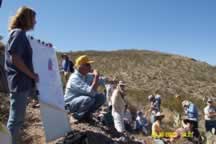
DCP 0805 – Upper part of Rhodes spring in Rhodes
canyon.
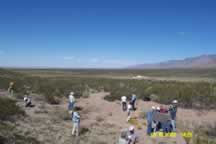
DCP 0806 – View northwest along former New Mexico
Highway 51 in Rhodes Canyon. Large cliff-forming unit is the Hueco Limestone,
notice the channels
cut in this unit.
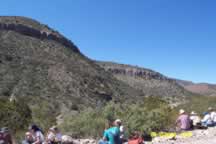
DCP 0807 – Lunchtime at Stop 4, the Panther-Seep
and Hueco sections. This outcrop represents the Pennsylvanian-Permian transition.
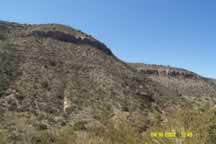
DCP 0808 – Photograph of the Pennsylvanian-Permian
transition in Rhodes Canyon.
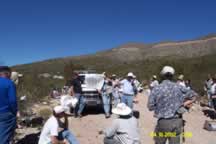
DCP 0809 – Spencer Lucas discussing the Penn-Perm
stratigraphy at Stop 4, Day 2.
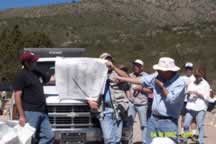
DCP 0810 – Spencer Lucas pointing out the details
of the Penn-Perm stratigraphy with the help of Mike Pope and Andy Heckert.
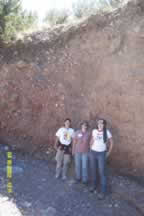
DCP 0811 – Modern stream channel cut in Quaternary
alluvium at Rhodes Canyon.
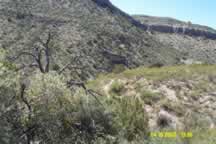
DCP 0812 – The exposure of the Penn-Perm transition
is the low cliff in the center of the photo.
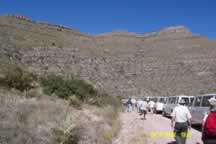
DCP 0813 – Participants hiking down section through
Pennsylvanian limestones.
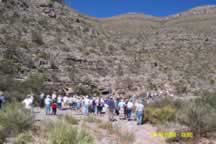
DCP 0814 – Stop 3 at the Desmoinian portion of
the Lead Camp Limestone.
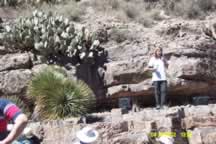
DCP 0815 – Kate Giles introducing her favorite
kind of rock at stop 3.
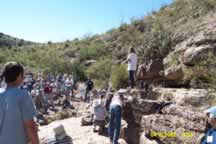
DCP 0816 – Kate Giles standing on cherty limestones
of the Lead Camp.
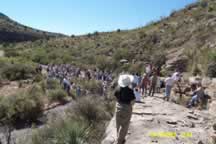
DCP 0817 – Lynn Soreghan discussion the cyclical
nature of limestone deposition in the upper Pennsylvanian section.
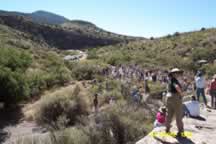
DCP 0818 – The crowd, the caravan, and cyclical
carbonates at stop 3.
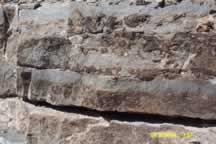
DCP 0820 – Cherty limestones of the Lead Camp.
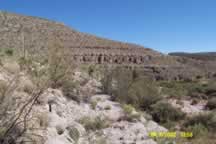
DCP 0821 – View down the Rhodes Canyon toward
Bear Den Canyon (Stop 2).
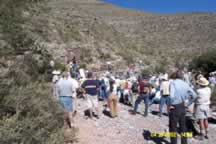
DCP 0822 – Mike Pope discussing his research
at Stop 3.
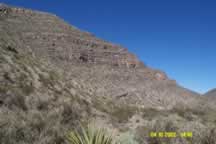
DCP 0823 – The Mississppian-Pennsylvanian section
at Bear Den Canyon on the footwall side of the Bear Den Canyon Fault. Missippian
Lake Valley Formation
forms the lower slope, Pennsylvanian section forms cliffs.
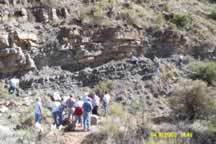
DCP 0824 – Mississippian rocks exposed at Bear Den Canyon – Rhodes
Canyon intersection. Great fossil collecting here!

DCP 0825 – Participants examining the drag folds
in the Mississippian rocks at the Bear Den Canyon Fault.

DCP 0826 – Steve Cather, with help from Virgil
Lueth, discussing the features of Ancestral Rocky Mountain and Laramide faults
in central New Mexico.
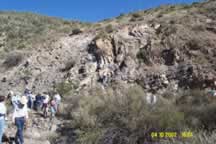
DCP 0827 – Drag folds along the Bear Den Canyon
fault.
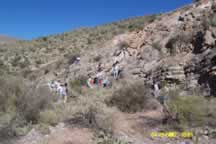
DCP 0828 – Bear Den Canyon fault.
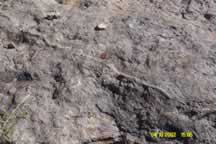
DCP 0829 – Exceptionally long crinoid stem preserved
in the rocks at Stop 2.
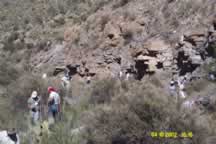
DCP 0830 – Fossil hunters at Stop 2.

DCP 0831 – Bear Den Canyon looking north. The
canyon formed along the trace of the Bear Den Canyon fault, one of the largest
through-going faults
in the San Andres. The mountain range starts a NE bend at this fault.
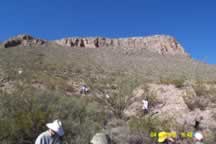
DCP 0835 – Geologists frolicking on the Proterozoic-Paleozoic
contact at Stop 1.
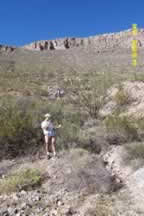
DCP 0836 – Jeff Amato discussing the Proterozoic
rocks at Rhodes Canyon.
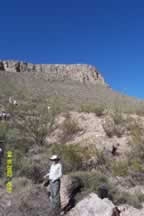
DCP 0837 – View of the Proterozoic granite gneiss
up toward the capping Montoya dolomite.
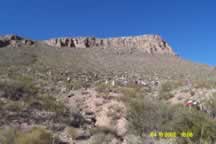
DCP 0838 – Participants examining the oolitic
ironstones in the Bliss Formation
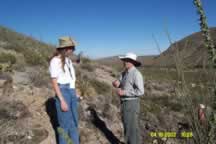
DCP 0839 – John Hawley discussion Quaternary
geology while standing on the Proterozoic.
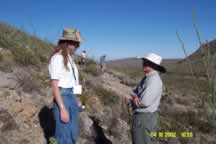
DCP 0840 – Participant digesting some of John’s
words of wisdom.
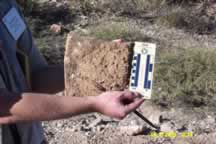
DCP 0841 – Ordovician fossils from Stop 1.
Day 3
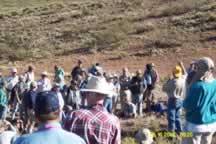
DCP 0842 - Virgil Lueth pointing out features of mineralization at the Memphis
mine, Day 3.
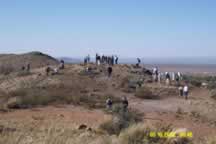
DCP 0843 – Participants examining mineralization
along the Torpedo-Bennett fault zone at the Memphis mine.

DCP 0844 – Remains of the Roos shaft at the Memphis
mine.

DCP 0845 – Another shaft on the Memphis property
with safety netting.
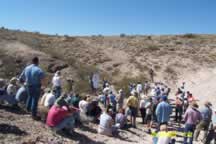
DCP 0846 – Participants gathered at the last
stop of the field conference.

DCP 0847 – Virgil Lueth pointing out recent manganese
mineralization at stop 3, day 3.
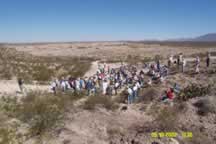
DCP 0848 – Photograph of ravel pits in Quaternary
Camp Rice gravels that have produced proboscideans (elephants and their ilk).
Photographer is
standing on manganese mineralized Camp Rice Formation.
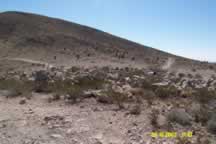
DCP 0849 – Paleozoic limestones of Tortugas Mountain (A – Mountain
to NMSU Aggies).